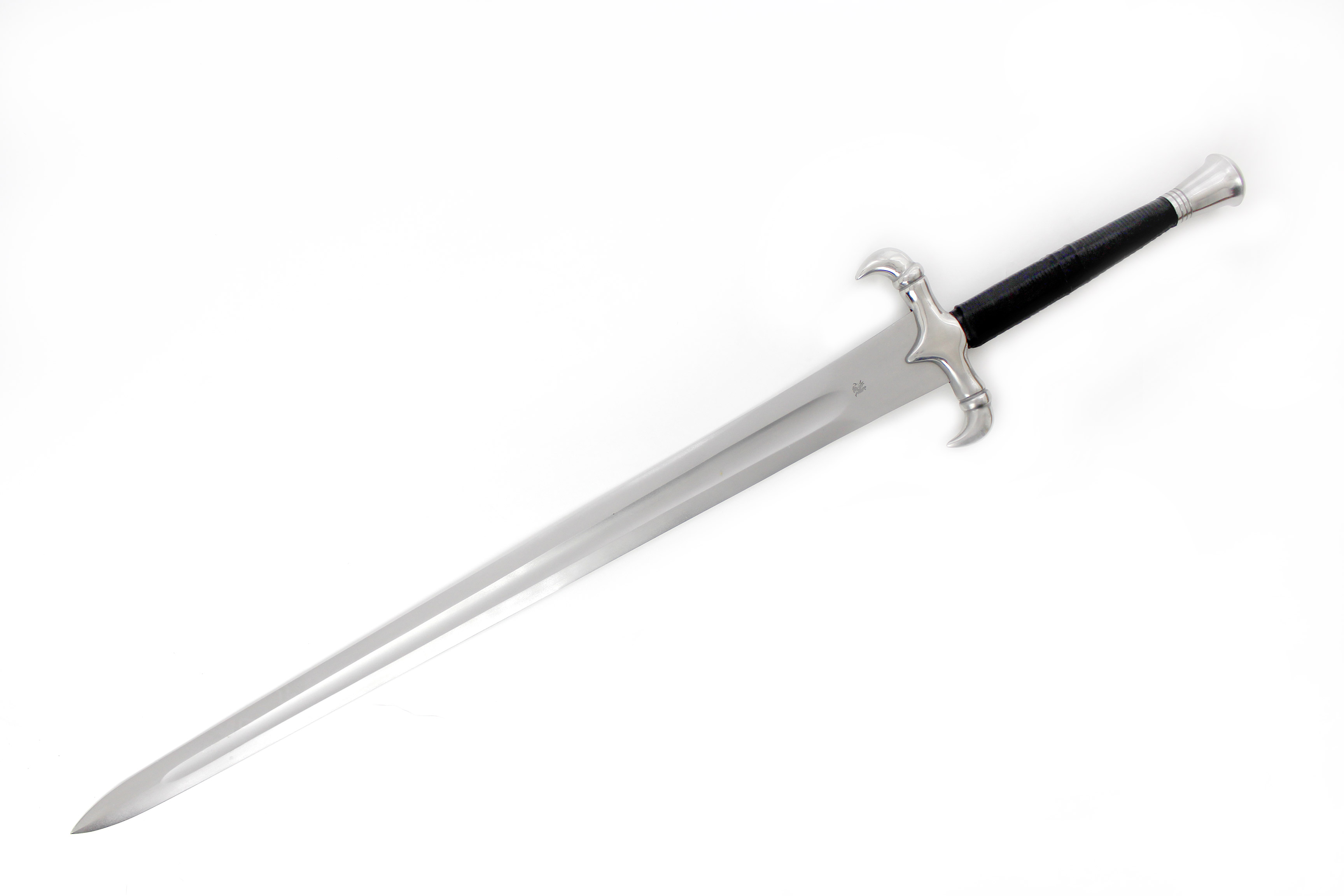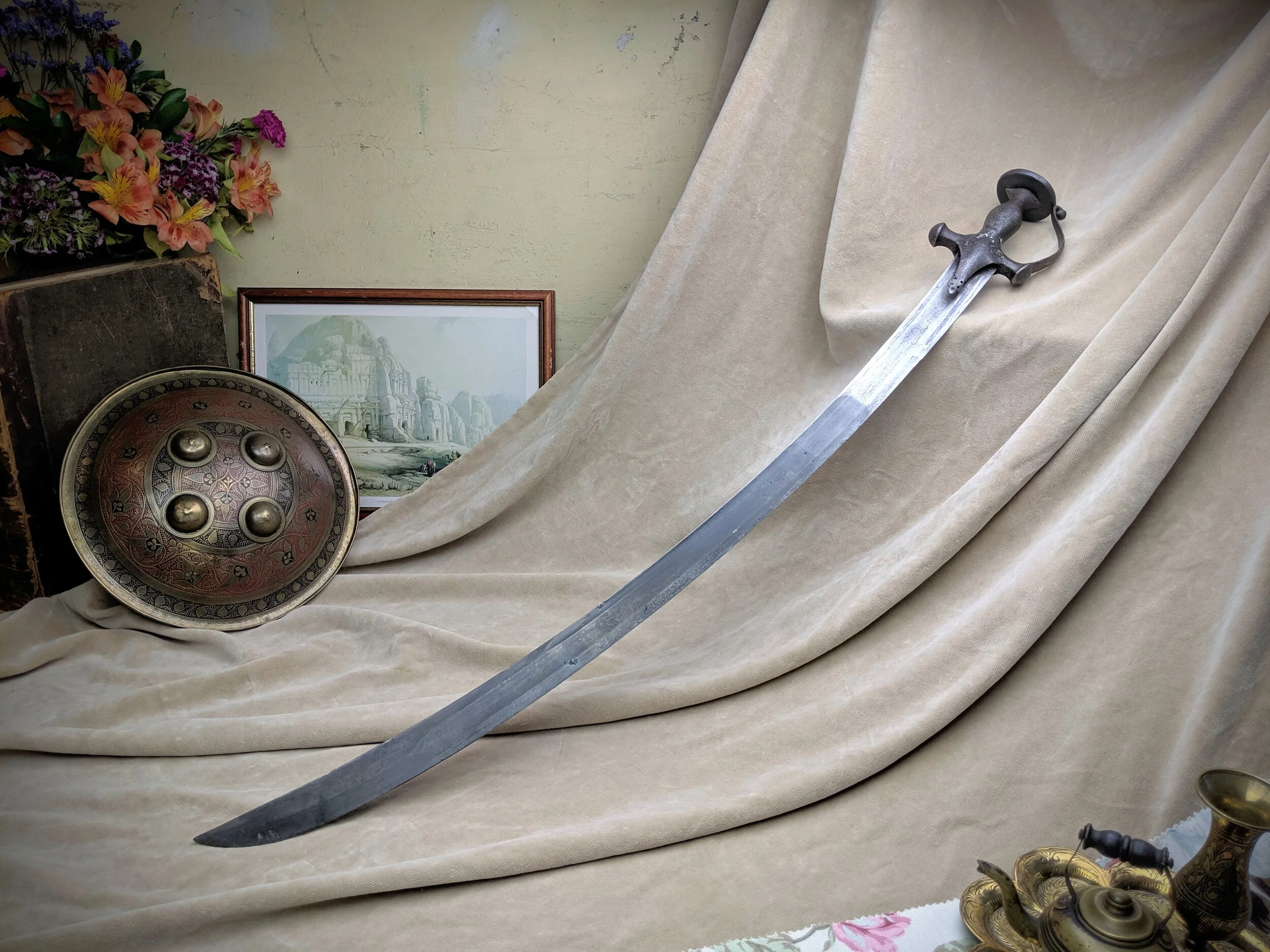Etymology and History of Swords

The word “sword” is derived from the Old English word “sweord,” which itself comes from the Proto-Germanic word “swerþaz.” The earliest swords were made of bronze and were used by the ancient Egyptians and Mesopotamians. Iron swords began to appear around the 12th century BC, and by the 5th century BC, they had become the dominant type of sword.
Swords have been used throughout history for a variety of purposes, including warfare, hunting, and self-defense. They have also been used as symbols of power and status. In many cultures, swords are considered to be sacred objects.
Materials Used in Sword Making, Sword definition
The materials used in sword making have varied over time. The earliest swords were made of bronze, which is an alloy of copper and tin. Bronze swords were strong and durable, but they were also relatively heavy. Iron swords began to appear around the 12th century BC, and by the 5th century BC, they had become the dominant type of sword. Iron swords were lighter and stronger than bronze swords, and they could be sharpened to a finer edge.
In the Middle Ages, steel swords began to be used. Steel is an alloy of iron and carbon. Steel swords were stronger and more durable than iron swords, and they could be sharpened to a very fine edge. Steel swords remained the dominant type of sword until the 19th century, when they were replaced by firearms.
Significance of Swords in Various Cultures and Time Periods
Swords have been used throughout history by a wide variety of cultures. In ancient Egypt, swords were used by the pharaohs and their armies. In ancient Greece, swords were used by the hoplites, who were the heavily armed infantrymen who formed the backbone of the Greek army. In ancient Rome, swords were used by the legionaries, who were the professional soldiers who formed the backbone of the Roman army.
In the Middle Ages, swords were used by knights and other warriors. In Japan, swords were used by the samurai, who were the warrior class. In Africa, swords were used by a variety of tribes and kingdoms.
Swords have also been used as symbols of power and status. In many cultures, swords are considered to be sacred objects. In some cultures, swords are used as ceremonial objects.
Types of Swords

Swords, with their diverse designs and purposes, have played a significant role in human history. From the earliest bronze swords to the finely crafted katanas of feudal Japan, each type of sword reflects the ingenuity and martial traditions of its time and place of origin.
Categorization of Swords
Swords can be categorized based on various criteria, including their design, purpose, and region of origin. One common classification system divides swords into three main categories:
- Single-edged swords: These swords have a sharp edge on one side and a blunt or rounded edge on the other. Examples include the European longsword and the Japanese katana.
- Double-edged swords: These swords have sharp edges on both sides, allowing for cutting and thrusting attacks. Examples include the Roman gladius and the Chinese jian.
- Curved swords: These swords have a curved blade, which provides greater cutting power and allows for more versatile attacks. Examples include the Middle Eastern scimitar and the Indian tulwar.
Famous Swords and Their Characteristics
Throughout history, certain swords have become legendary for their unique characteristics and the feats they have witnessed. Some notable examples include:
- Excalibur: The legendary sword of King Arthur, said to have been forged by the wizard Merlin and bestowed upon Arthur by the Lady of the Lake.
- Durendal: The sword of the legendary French knight Roland, said to have been indestructible and capable of cutting through stone.
- Masamune: A renowned Japanese swordsmith who forged some of the most famous and revered katanas in history, known for their exceptional sharpness and durability.
Advantages and Disadvantages of Different Sword Types
The choice of sword type in combat depends on the specific situation and the user’s preferences. Each type of sword has its own advantages and disadvantages:
- Single-edged swords: Advantages: Better cutting power, more versatile than double-edged swords. Disadvantages: Less effective for thrusting attacks.
- Double-edged swords: Advantages: Can be used for both cutting and thrusting, more balanced. Disadvantages: Less cutting power than single-edged swords.
- Curved swords: Advantages: Greater cutting power, versatile attacks. Disadvantages: More difficult to control, less effective for thrusting.
Ultimately, the best sword for a particular combat situation depends on the user’s skill, the opponent’s weaponry, and the terrain.
Swordsmanship and Techniques: Sword Definition

Sword definition – Swordsmanship, the art of wielding a sword, encompasses a vast array of techniques and principles. Mastering this craft requires dedication, practice, and a deep understanding of the blade’s mechanics and its potential in combat.
Swordsmanship involves a combination of offensive and defensive maneuvers, each with its unique purpose and effectiveness. The basic principles include footwork, stance, and blade control. Footwork allows for swift movement and agility, enabling the swordsman to maneuver around opponents and strike from unexpected angles. A solid stance provides stability and balance, allowing for powerful strikes and effective parries. Blade control involves the ability to manipulate the sword with precision and dexterity, enabling the swordsman to deliver accurate thrusts and cuts.
Sword Fighting Styles
Throughout history, various sword fighting styles have emerged, each with its own distinct characteristics and advantages. Some of the most notable styles include:
- Western Swordsmanship: Originating in Europe, this style emphasizes footwork, quick strikes, and powerful thrusts. It is characterized by the use of one-handed swords, such as the longsword, rapier, and saber.
- Eastern Swordsmanship: This style, originating in Asia, is known for its fluid movements, precise cuts, and emphasis on mind-body connection. It is characterized by the use of two-handed swords, such as the katana, wakizashi, and jian.
- Fencing: A modern sport derived from historical swordsmanship, fencing emphasizes precision, agility, and the use of specialized weapons such as the foil, épée, and saber.
The effectiveness of a particular sword fighting style depends on various factors, including the type of weapon used, the skill of the swordsman, and the specific combat situation. Each style has its strengths and weaknesses, and the best approach often involves adapting techniques from multiple styles to suit the individual’s needs and preferences.
Training and Practice
Mastering swordsmanship requires rigorous training and practice. This involves regular drills to develop muscle memory, sparring to test techniques in a controlled environment, and studying historical manuals and treatises to gain knowledge from past masters.
Dedicated practice allows swordsmen to improve their coordination, reaction time, and overall proficiency with the blade. It also fosters a deep understanding of the weapon’s capabilities and limitations, enabling them to adapt their techniques to different combat situations and opponents.
The sword, a timeless weapon of war and symbol of power, has been wielded by countless warriors throughout history. Its sharp blade, honed to perfection, has spilled blood and shaped destinies. Yet, in the modern era, a new kind of sword has emerged: the wordle nyt, a daily puzzle that challenges our minds and tests our vocabulary.
Like the swords of old, the wordle nyt requires skill, strategy, and a touch of luck to conquer its elusive five-letter secrets.
In the hands of a skilled warrior, a sword becomes an extension of their will, its blade a gleaming symbol of power and precision. But just as a sword’s sharp edge can cleave through flesh, so too can the allure of a diamond’s brilliance unveil the depths of our desires.
Yet, like the sword’s double-edged nature, the pursuit of diamonds can lead us down a treacherous path, where the glitter of wealth and status can obscure the true meaning of our existence.
In the hands of a skilled warrior, a sword becomes an extension of the body, a channel through which power flows. Just as a channel guides water to its destination, a sword guides the warrior’s intent, translating it into a lethal dance of steel.